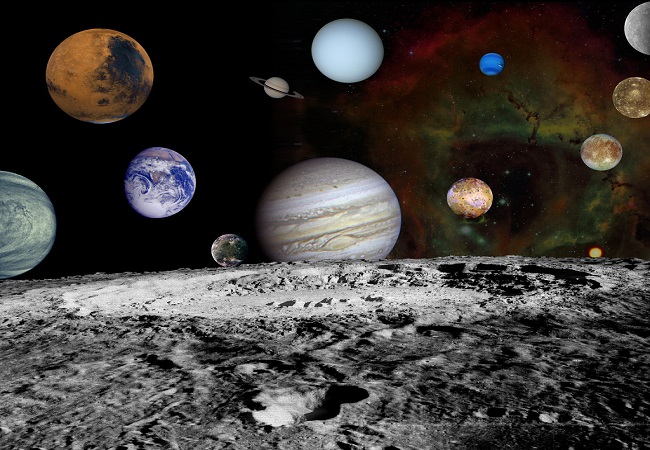
Recently reports published by NASA found two Earth size planets revolving around the Teegarden star. Eventually converting it the 24thnearest planet to the sun.
Found in 2003, Teegarden star is also known as the ‘Red Dwarf’. It is only 12.5 light years away from the sun. The star stimulates less energy and light in comparison to that of the Sun.
Comparatively to other stars its mass volume is lower and is 0.089 times the Sun’s mass. It shines at a frail 0.00073 times, the luminosity of sun. One will need a decent large telescope to view it because of its 16thmagnitude.
Near-Earth Asteroid Tracking (NEAT)program viewed the star with the help of two 1 m telescopes in Maui. Teegarden was named after NASA’s astrophysicist, BonnardJ. Teegarden.
Astronomers also discovered several dwarf size planets revolving around the 20 light years away from Earth. Researchers were able to find about them with the help of Teegarden team with the help of data mining several optical sky survey data sets.

Research found two Earth-size planets revolving around the Teegarden Star in their recent studies. The information appeared somewhat heavier in comparison to that of Earth.
The planets were found on the exact zone where there is a laid-back possibility of forming water on their surfaces. They also resembled the inner planets of our solar system.
Scientists have also noted down that the newly found planets were spinning round the parent star with time phases of five days and 11 days. Their time period makes them even more active and faster than the rest orbiting the sun.
Scientists also concluded that there are presence of several other planets orbiting the Teegarden Star. Researchers also concluded that the newly found planets could be useful for the transit of viewing Earth.
With the help of CARMENES, scientists were able to view the planets. CARMENES is an instrument of next generation. It is specifically built of 3.5m telescope at Calar Alto Observatory in Spain.
With the help of CARMENES,researchers were able to extract a lot of information about the star. They also found several factors like the temperature of the star, spin, motion and even its chemical composition.
Certainly, planets follow their specific path and tail their common center of mass.
Planets and stars follow their explicit paths, where stars move in a slightly not so certain path and at few times even fall towards us or fall away.
This movement at times also generates a swing in the spectrum in a Doppler mode. Reports also stated that the instruments provided detailed information of the notion of the stars which revolving in varied ways.

After researching for three years, CARMENES,gave scientists the image of two red dots revolving around the Teegarden Star. These two dots were marked as Teegarden B and Teegarden C.
Scientists discovered these two planets with a radical velocity method. Planet’s mass components also involve a partial water or iron composition.
According to the info-graphic images approximately 200 measurements determined the presence of these stars. Movement of any object near the Teegarden star was deeply studied. The movement came up with more with transits of the newly found planets.
Teegarden B completed its one orbit in 4.9 Earth days. While Teegarden C completed it in 11.4 days. Findings also included that these two planets could still have a possibility of being in the larger part of the solar system.
Teegarden B have a ratio of 60% of presence of the temperate surface environment with approximately a temperature of 28 degree celsius.
Whereas on the other hand Teegarden C was have a ratio of 50% of the presence of temperature surface environment with a temperature of-47% degree Celsius. Among the two planets, Teegarden B have a much relatable index than that of Earth’s index.
The above-mentioned parameters do not state the fact that these planets would be a reliable and good option for habitability. In spite having several habitable factors, these planets could still be a consistently generous of life. They are put into the habitable category of the Exoplanets.
Teegarden Star’s potential of inhabiting life has paved more opportunities for scientists for the future research. The cool red dwarf planet is also named among the fourth habitable exoplanets.

Till date, scientists have found around 4000 stars orbiting around in the galaxy. Of all the stars 96% of them were having a larger mass than Earth. Scientists have been able to track down 18 Earth size objects till now,and the smallest one has only a 69% mass of the Earth.
Some of the Exoplanets found include-Proxima Centauri b, Kepler 186f, Kepler 452b, Kepler 22b, Kepler 438b, Kepler 62f, Kepler 442b, Kepler 62e and Wolf 1061.
And the list goes on!
You might also like to read about Miss World 2019, and know about how winning history of powerful women awarded with the title.
7,320
7,320




Choose your and your partner's zodiac sign to check compatibility